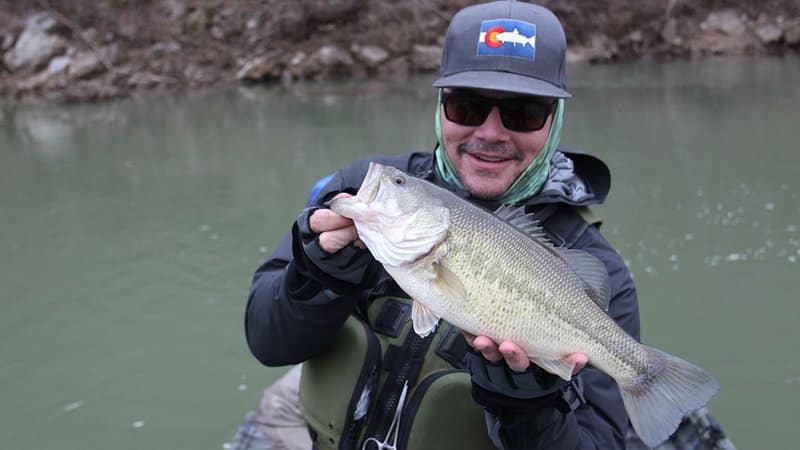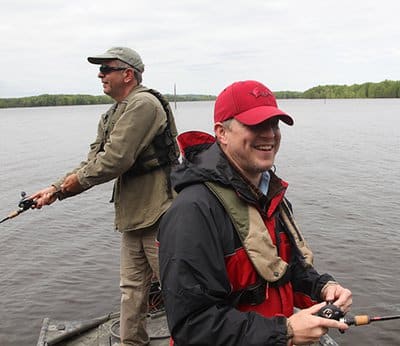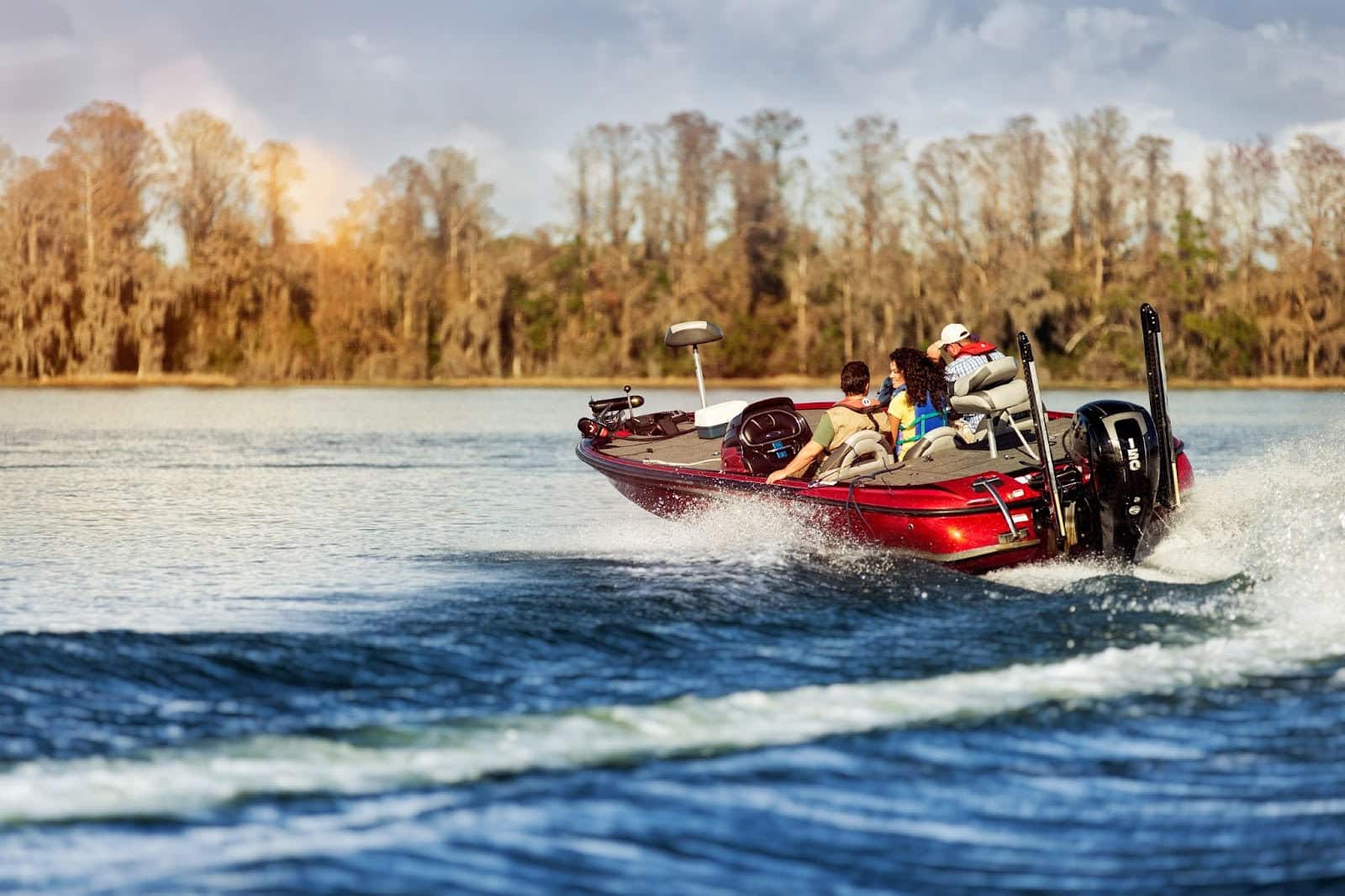Take it slow for winter fishing
ON 12-08-2021

Dec. 8, 2021
Randy Zellers
Assistant Chief of Communications
LITTLE ROCK — As water temperatures in lakes throughout Arkansas finally start to dip into the 50s, many anglers will hang up their rods and reels after a prolonged warm season that offered many extra days of comfortable fishing. However, for those willing to bundle up and brave a few chilly hours, fishing can still offer some great action if you change your mindset and tactics.
Fish are cold-blooded creatures, meaning they have metabolisms that rise and fall with the temperature of their surroundings. During spring and summer, warm water means higher metabolic rates and more of a need to feed. As the water temperature cools, so does the activity level of bass, crappie and other sport fish, but that doesn’t mean they can go without food entirely. This is the time of year when quality is much more important to fish than quantity. In terms of food, that means getting the most energy for the least amount of energy spent chasing down prey.
Be Patient With Jerks
Cold fronts not only slow the metabolism of larger fish, they outright stun some of the smaller baitfish species, such as threadfin shad and gizzard shad. While some shad will die immediately, most will struggle for a few days before finally succumbing to the temperature if they can’t find some thermal refuge. This means there will be plenty of free and easy food for predator fish to take advantage of just before winter sets in for good. Largemouth bass, spotted bass and smallmouth bass all are gluttons for this shad buffet, but it presents a problem for anglers who try to “match the hatch” so to speak. The day of the cold front, getting a fish to fall for your lure over the real thing can be difficult, but after a day or so a suspending jerkbait can be the ticket. Cast the lure out, crank it down a few turns of the reel handle, then let it pause. Give it a few seconds at rest, then crank a few more reel turns before you pause again. Some people prefer to snap or sweep the rod tip to move the lure and reel up the slack to ensure they give the lure time to rest, while others prefer to crank the handle quickly, saving the wear and tear on their wrists. Either approach can work, but the time you pause can be the key to getting more strikes. Some days, a quick jerk-jerk-pause cadence will elicit a strike, while other days may require a long pause of up to 10 seconds or more to get the fish to finally react.
Lovin’ Spoonful
Another great presentation that fools fish into believing it’s a stunned shad is the jigging spoon, also called a slab spoon. This unassuming chunk of lead with a treble hook tied to the end doesn’t look like much, but when worked properly across the bottom its fluttering fall can offer just the right amount of flash and vibration to trigger a strike from a lethargic bass sitting with its belly on the bottom. Just look for areas without a lot of jagged rocks or woody cover as the open hook of a spoon can lodge into these surfaces and cause more frustration than fun. Cast the lure, let it fall to the bottom, then pop it up with a quick snap of the rod tip. Reel up the slack and stay in touch with the lure as it flutters back to the bottom. The technique looks like a shad that is dying and struggling to get away from predators. Even lethargic fish will find it hard to pass on the easy meal and the sudden snap of the fleeing fish will trigger their predatory instinct to react. Usually the hit will come as the lure is dropping, so keep an eye on your line for it to jump or stop instead of continuing its descent. Don’t be surprised if you catch fish other than bass with this technique, either. Walleye, catfish and even large crappie will take advantage of the easy meal imitated by this lure.

Alabama Bound
Big rewards is what the Alabama rig is all about, both for the fish and the angler. Constructed of wire and jigheads with small swimbaits attached, Alabama rigs mimic a small school of baitfish swimming along over likely cover. In winter, this offers bass a chance at grabbing a few small fish in one swipe. While smaller fish do hit the Alabama rig, it’s known for producing big fish who are looking for a big mouthful. Just be ready for a workout, as casting and retrieving an Alabama rig all day can definitely wear on the shoulders. Use a heavy action rod and lob the lure more than trying to whip it back and cast long distances. Braided line that’s around 80-pound-test breaking strength also can help avoid some tears if your Alabama rig snags up on unseen cover. A slow hard pull can often straighten the hook on the swimbait that’s snagged, allowing you to retrieve the rest of the rig and save a few dollars. Just be sure to loosen the drag on your reel enough to allow a fish to get a good bite on the lure instead of yanking it away when setting the hook. Fish often will set the hook on themselves as this is one of the few winter presentations that will elicit a bone-jarring strike.
Deadly Ned-ly
For decades, many bass anglers believed soft plastics were no good once the water temperature dipped below 60 degrees. Jigs tipped with pork chunks were the only smart option for a slow, bottom-crawling bait. But times and tactics have done a complete turnaround since those days. Small, straight worms like the Zoom finesse worm, Gary Yammamoto’s Senko or the ZMan TRD have proven that it doesn’t take a lot of wavy tentacles to catch a bass’s attention. Sometimes the best action is hardly any action at all. During winter one of the best finesse presentations is the simple Ned rig. Sliding a 2- to 3-inch morsel of a soft-plastic stick bait slowly over the bottom can entice a bite when reaction strikes from the above-mentioned tricks fail to produce. The key to fishing the Ned rig is the size of the jighead. Go as light as possible, and use spinning equipment to keep things small. You don’t want the jighead to crawl around on the bottom but to glide slowly just over it. A 1/16-oz. head with a no. 2 or no. 4 hook is a great option to start learning the technique, and the use of Zman’s special Ned rig soft-plastics will help float the bait. Often you won’t feel a hit, so it’s important to keep a sharp eye on your line for any twitch or odd reaction.
Be sure to check out the Arkansas Game and Fish Commission’s Weekly Fishing Report for up-to-date information on the hot bite across Arkansas. Guides, bait shops and anglers around The Natural State pitch in to make the report as helpful as possible for anglers looking to learn more about fishing year round.
Recent News

Watch your wake
Jul. 2, 2025
Subscribe to Our Weekly Newsletter E-mails
Don’t miss another issue. Sign up now to receive the AGFC Wildlife Weekly Newsletter in your mailbox every Wednesday afternoon (Waterfowl Reports are published weekly during waterfowl season and periodically outside the season). Fishing Reports arrive on Thursdays. Fill in the following fields and hit submit. Thanks, and welcome!

